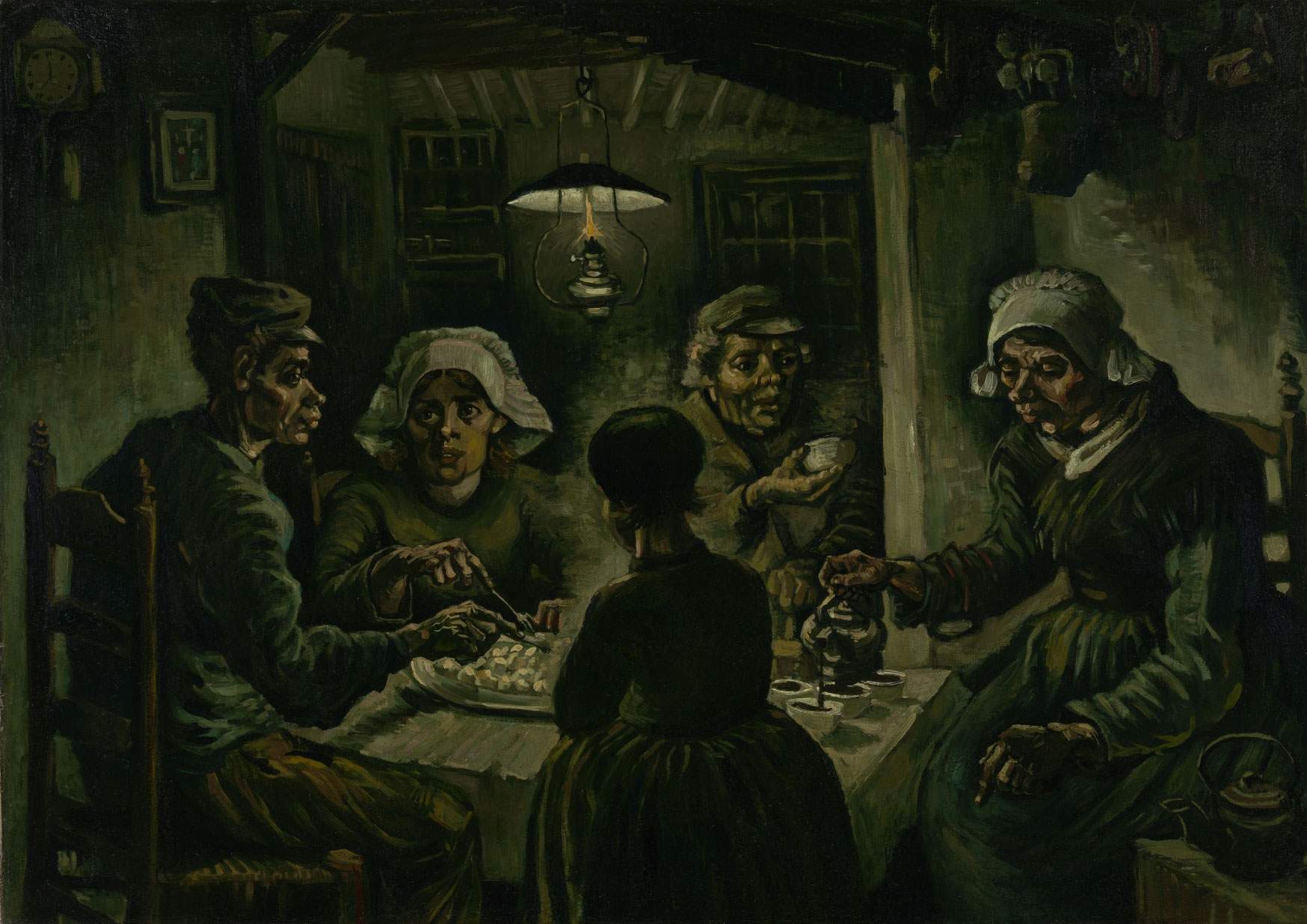An exhibition-dossier on the Potato Eaters at the Van Gogh Museum in Amsterdam
An exhibition-dossier on one of Vincent van Gogh ’s (Zundert, 1853 - Auvers-sur-Oise, 1890) best-known masterpieces, The Potato Eaters, is coming to the Van Gogh Museum in Amsterdam. It is entitled The Potato Eaters: Mistake or Masterpiece? (“The Potato Eaters: Mistake or Masterpiece?”) and is scheduled from October 8, 2021 to February 13, 2022.
The exhibition will focus on the circumstances under which the work was created, the meaning of the painting, how the great Van Gogh made it, but also the criticism it attracted. In addition to the 1885 work, the exhibition will feature drawings, sketches, letters, and a selection of works by artists of the time who inspired Van Gogh, such as Jozef Israëls and Anthon van Rappard. Also on display will be a life-size model of the cottage of the De Groot-van Rooij family, the protagonists of Van Gogh’s painting, with a reconstruction of the environment painted by the Dutch painter: workshops and other activities will be organized inside. The reconstruction will thus be an opportunity to learn more about peasant life in the 19th-century Brabant countryside.
Although he never explicitly used the word “masterpiece” in his letters, Van Gogh considered only four of his paintings to be such: The Bedroom (1888), The Sunflowers (1888), and La berceuse (1888-1889), to which can be added The Potato Eaters (1885), which he took months to prepare to paint. The Potato E aters is Van Gogh’s first major masterpiece and can be seen as the work that sanctioned his acquisition of new painting skills: he hoped that this intense and technically relevant work would provide him with access to the Paris art market.
The painting depicts a peasants’ meal, a theme rather frequented by artists of the time: evidence of this can be found in sources of inspiration, including artists such as Joseph Israëls and Charles Degroux. For Van Gogh, the Potato Eaters were symbolic of rural life, honest and unidealized. However, despite the fact that the artist placed many expectations on this painting, his intentions failed, because the merchants and artists of the time strongly criticized it. Even his brother Theo did not spare him criticism. The work was shown in an exhibition in Paris, but Van Gogh failed to sell it, and it ended up in Theo’s apartment in the French capital. However, Van Gogh did not admit defeat; rather, the failure convinced him to continue his career as an artist, which had just begun.
The numerous studies, drawings and sketches Van Gogh made in Nuenen to prepare The Potato Eaters, along with the works of the artists who inspired him, form the exhibition’s main thread. The exhibition aims to show that Van Gogh was not only a self-taught and struggling artist, but also an ambitious man who meticulously prepared his work. He did not give up easily, even in the face of fierce criticism. “What I think of my work,” Vincent wrote to his sister Willemien in October 1887, “is that the painting of the peasants eating potatoes that I did in Nuenen is, in short, the best thing I have done.”
The exhibition is made possible by the support of the Van Gogh Museum’s main partners, namely ASML and Van Lanschot, partner Hyundai, and contributions from The Sunflower Collective. The Potato Eaters Studio, the reconstruction of the cottage, will be fully funded with support from ASML.
Pictured: Vincent van Gogh, The Potato Eaters (Nuenen, April-May 1885; oil on canvas, 82 x 114 cm; Amsterdam, Van Gogh Museum)
 |
| An exhibition-dossier on the Potato Eaters at the Van Gogh Museum in Amsterdam |
Warning: the translation into English of the original Italian article was created using automatic tools. We undertake to review all articles, but we do not guarantee the total absence of inaccuracies in the translation due to the program. You can find the original by clicking on the ITA button. If you find any mistake,please contact us.





























